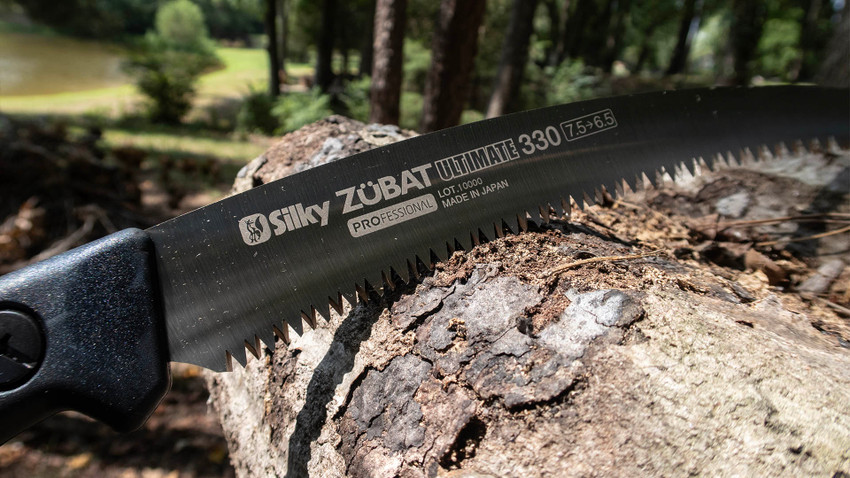Which Zubat is Right for Me?
When a brand offers a tool in five sizes and multiple teeth profiles and additionally, several styles, you know it’s got to be a top seller. The Zubat is Silky’s flagship saw according to Travis Vickerson, arborist, and Silky’s Technical Director. It was the first handsaw in the U.S. market that was hard to break or damage, and also one of the first saws with replaceable parts. The sheath, which holds the saw in, continues to distinguish this saw. “It’s easy to take the saw out and put it back in, and it doesn’t fall out, which provides a lot of peace of mind for an arborist high up in a tree,” says Vickerson.
For all those reasons, the Zubat is still one of the top saws used by arborists today. And this spring, Silky’s iconic Zubat gets even better with an upgraded scabbard for improved saw retention, a new coating, and staggered tip chisel teeth that help remove wood chips more easily while cutting.
“When you’re cutting a branch that’s ½ inch to three inches, which is too big for a lopper and too small for a chainsaw, the Zubat is the perfect tool for the job,” says Vickerson. “If you’re chainsawing and your saw runs out of gas or gets bound up, the Zubat can finish the cut. For so many jobs, it’s the perfect saw. The angle of the handle to the curved blade is ergonomic, which makes it awesome to use. You can saw upside down and right side up. It’s hard to find a cutting angle that’s not comfortable. The Zubat is one saw that can do it all.”
The Zubat isn’t just popular with arborists. Fire service, smoke jumpers, and hot shot crews love the longer blade versions. So do landscapers, gardeners, and homeowners. That’s because the Zubat is one saw that can do many things.
To determine which Zubat is right for you, you need to consider both the size of the teeth and the length of the saw. “Run a fine tooth blade on a 240mm saw for ornamental pruning, Japanese maples, smooth cuts, and landscape-type pruning,” says Vickerson. “Cutting bigger wood with a longer blade is more efficient. One stroke of a 390mm blade equals two strokes of a 240mm blade. Climbing arborists prefer a 300mm or 330mm blade length, while landscapers on the ground may opt for a 390mm blade.”
The difference between small, medium, large, and extra-large teeth is the well, which is how deep the teeth are. Vickerson says that all teeth cut at the same speed. How much material they’re removing with each pass is what changes. Vickerson recommends medium teeth and a 270mm length saw for maximum versatility. The 270mm blade is an excellent ornamental climbing saw for pruning magnolia trees and other larger ornamentals, and with medium teeth it can also handle structural pruning. Users who want efficiency and who plan to cut mostly bigger branches and trees should choose L and XL teeth in a 300mm or longer saw. The 300mm and larger saws are great all-around tools for general use.
Vickerson compares buying a Zubat to buying a hammer. “A carpenter may purchase framing, finish and trim, and roofing hammers. But then he has to pay for all of those hammers and carry all of them too. Each hammer is specific and does one job really well. But most people, including many carpenters, opt to buy one hammer and make it work for lots of different kinds of jobs. The Zubat is that do-everything tool. Not everybody chooses to or can afford to own a quiver of saws. If you want one saw to do most things, the Zubat is the tool for you.”

